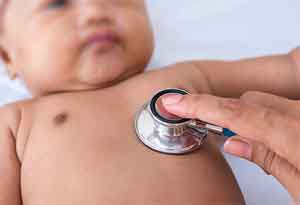- Home
- Editorial
- News
- Practice Guidelines
- Anesthesiology Guidelines
- Cancer Guidelines
- Cardiac Sciences Guidelines
- Critical Care Guidelines
- Dentistry Guidelines
- Dermatology Guidelines
- Diabetes and Endo Guidelines
- Diagnostics Guidelines
- ENT Guidelines
- Featured Practice Guidelines
- Gastroenterology Guidelines
- Geriatrics Guidelines
- Medicine Guidelines
- Nephrology Guidelines
- Neurosciences Guidelines
- Obs and Gynae Guidelines
- Ophthalmology Guidelines
- Orthopaedics Guidelines
- Paediatrics Guidelines
- Psychiatry Guidelines
- Pulmonology Guidelines
- Radiology Guidelines
- Surgery Guidelines
- Urology Guidelines
A rare cause of neonatal persistent jaundice

Dr. Gracinda Nogueira Oliveira and associates have reported a case with a rare cause of neonatal persistent jaundice.The case has been published in Journal of BMJ Case Reports.
A 22-year-old gravida 2, para 1 (G2P1) woman with immunoglobulin anti-D prophylaxis, insulin-treated gestational diabetes and first-trimester cytomegalovirus (CMV) infection vaginally delivered a 39-week boy weighing 3720 g (90th centile) and with Apgar scores of 8 and 10 at 1 and 5 min. Prenatal ultrasonographic assessment throughout gestation was normal. Nursery stay was uneventful. He was discharged on day 2, with a normal examination, except for the appearance of jaundice, with a transcutaneous bilirubin of 248 µmol/L (cut-off 250 µmol/L), not meeting the criteria for phototherapy. A follow-up clinic on day 4, arranged for bilirubin measurement and CMV testing, surprisingly revealed poor general appearance, lethargy, very icteric skin and a minor weight loss (9% of birth weight). Both liver and splenic edges were palpable. Vital signs were normal. Blood routine showed haemoglobin of 19 g/dL, haematocrit of 58%, white blood cells 11.6x109/L and platelet count 128x109/L. Biochemistry revealed total serum bilirubin of 694 µmol/L (cut-off 350 µmol/L), indirect bilirubin of 681 µmol/L, and a normal glucose, urea, creatinine and coagulation study. He was admitted for intensive phototherapy, and his total serum bilirubin level decreased to 289 µmol/L in 9 hours, but rebound hyperbilirubinaemia followed whenever attempts to discontinue were made. He remained icteric, hypotonic, required enteral tube feeding and had a persistent hyponatraemia treated with oral sodium chloride. On day 9 cranial ultrasound (US) was normal, but abdominal US uncovered enlarged adrenal glands, with a hypoechoic heterogeneous mass, measuring 32×21×17 mm on the right and 33×23×17 mm on the left, suggesting a bilateral adrenal haemorrhage (AH). CMV viruria came negative, and subsequent studies showed increased thyroid-stimulating hormone (TSH) and normal free thyroxine 4 levels, leading to the initiation of levothyroxine treatment on day 14. Transfer to a tertiary paediatric hospital was arranged on day 28. Abdominal Doppler US on day 30 confirmed the bilateral AH (figure 1A). The complete hormone evaluation showed raised adrenocorticotropic hormone (ACTH), prolactin, aldosterone and renin, and low cortisol level, which, together with an elevated TSH, disclosed hypothyroidism secondary to adrenal insufficiency (AI). Under hydrocortisone treatment, started on day 39, hypotonia resolved and feeding improved with an adequate weight gain. Neurological and metabolic evaluations were normal. Thyroid parameters normalised at 3 months and levothyroxine was suspended. At 6 months fludrocortisone was added to control the inappropriately activated renin-angiotensin-aldosterone system. Two-month and 6-month follow-up US revealed an ongoing and significant regression of both adrenal masses in size and echogenicity (figure 1B,C). Presently, at 22 months, he remains asymptomatic but continues on corticosteroid replacement therapy for hormonal control. The most recent US, at 12 months, showed an even smaller bilateral haemorrhage with a maximum diameter of 6 mm.
AH is a rare neonatal event, most often unilateral and located on the right side (70%) and infrequently bilateral (5%–10%). Predisposing factors include difficult delivery, maternal diabetes, large for gestational age infants, birth asphyxia or trauma, septicaemia and underlying tumour.The aetiology of our patient’s bilateral AH is unknown.
For more details click on the link : http://casereports.bmj.com/content/2017/bcr-2017-223306.full

Disclaimer: This site is primarily intended for healthcare professionals. Any content/information on this website does not replace the advice of medical and/or health professionals and should not be construed as medical/diagnostic advice/endorsement or prescription. Use of this site is subject to our terms of use, privacy policy, advertisement policy. © 2020 Minerva Medical Treatment Pvt Ltd